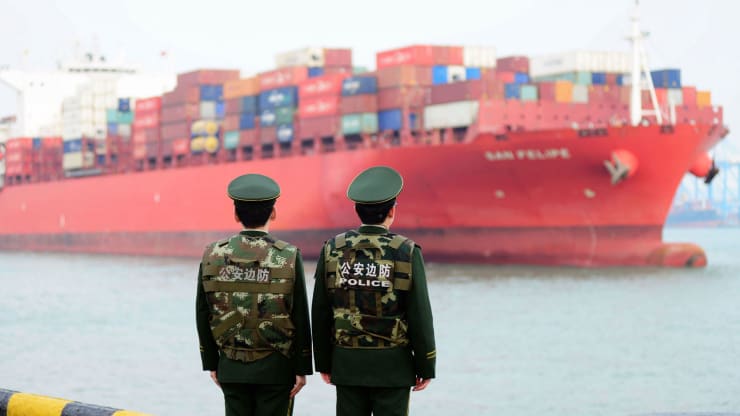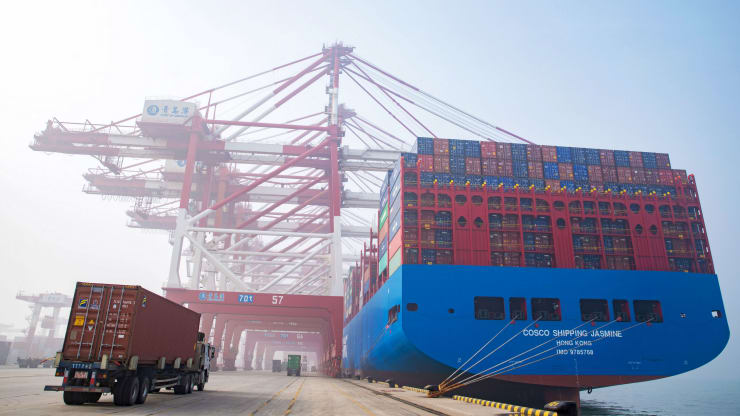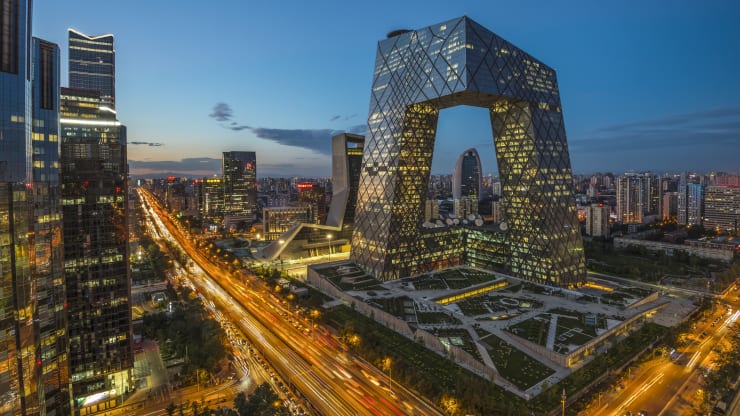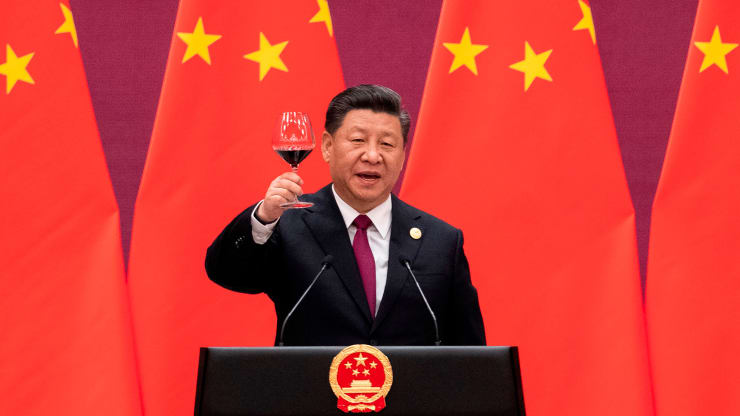China is on the cusp of keeping a big promise — a vow to double its GDP and income in a decade and take the country to the forefront of the global economic power structure.
The nation now faces the challenge of keeping the momentum going in the face of mounting challenges.
The ascension began in the late 1970s with a move to more open markets. It continued through aggressive central planning, utilizing the advantages of cheap labor, a devalued currency and a robust factory system to spread its products around the world.
All of that changed the economy from slumbering rural decay to a prospering diverse superpower. The country now seems on a inexorable path to No. 1.
China has climbed to No. 2 in the world, with a GDP of $13.1 trillion that, while still trailing the U.S., keeps getting closer. Forecasters expect that growth just north of 6% in 2020 will get to the stated goal of doubling the economy from 2011-20.

On the other hand, China also is a country that appears to be taking the worst of the trade war with the U.S. and faces myriad other challenges to keep up to torrid pace of growth.
The future awaits, then, however complicated.
“Going forward, China is going to continue to be very competitive,” said Michael Yoshikami, founder of Destination Wealth Management. “China is still going to be a global player. But it’s a matter of managing expectations relative to what you think is going to happen.”

Indeed, a nation with growth that would be the envy of virtually anywhere else in the world is seeing, in relative terms at least, a significant slowdown. Growth peaked at 14.2% in 2007 but has declined to below 7% annually each year since 2015, according to World Bank figures.
‘Tariffs are hurting’
Yoshikami’s firm is based in San Francisco, but he does significant investing business with China and travels there frequently.
What he sees is a nation leading the way in education and technological innovation but suffering under the weight of U.S. tariffs on Chinese imports, as well as the rising cost of labor and slowing manufacturing.
“The Chinese economy is targeted to grow at 7%. It was growing at 14%. If it grows at 6%, that’s still a lot, but you’re going to see a lot of negative sentiment,” Yoshikami said. “If you talk to people in China, the average person is not as optimistic as they were two years ago or four years ago or six years ago.”
One big negative has been the trade war.
While the two sides appear on their way to a small-scale phase-one agreement on tariffs, much is left to be done, and the ramifications are being felt through the Chinese economy.

“The average person believes that the trade tariffs are hurting,” Yoshikami said. “Inflation is up. The cost of basic foodstuffs has gone up 10% to 15%. The cost of pork has gone up 100%. So you literally have people changing their diet because they simply can’t afford the product anymore.”
“It’s hurt them a lot,” he added. “The U.S. would certainty welcome a deal. But China really needs a deal.”
On one hand, Yoshikami sees rapid and widespread advancements that allow consumers to buy goods on apps like AliExpress that provide cheap products at no shipping charges. Consumers line up for Levi Strauss jeans and other products as they still covet American goods as symbols of U.S. economic hegemony.
But there’s an overhang.
Taking stock of tariffs
The trade war damage to the economy is palpable and measurable.
Fiscal revenue growth has fallen to 3.8% in 2019 from 6.2% a year ago as the rise in tax receipts has been barely positive after increasing 8.3% in 2018, according to Nomura Global Economics, citing data through October. In addition, export growth declined 0.3% through November after rising 9.9% for the same period a year ago, due to the collapse of U.S. exports, which declined 12.5% in 2019 compared to 2018 growth of 8.5%.
That export slowdown itself took 1.3 percentage points off China’s GDP this year, according to Nomura.
“We have been leading the call on a growth slowdown since mid-2018, and we wish to maintain this lead by calling the recovery,” the Tokyo-based research firm said in a lengthy year-ahead look at China. “Unfortunately, we have to reiterate that the [worst] is not yet over and 2020 looks set to be yet another tough year.”

ispyfriend | E+ | Getty Images
Among the obstacles Nomura sees for China are a slowing real estate sector, less room for stimulus, particularly the credit easing that fueled a growth spurt in 2016-17, and continued issues with leverage.
“Amid worsening growth prospects, Beijing needs to do more to bolster growth,” Nomura economist Ting Lu and others wrote. “However, we recommend caution on the speed, scope and efficiency of Beijing’s stimulus measures, due to surging debt, including foreign debt, a much lower return on capital, the smaller current account surplus and falling FX reserves.”
The upside
Wall Street, though, thinks the issues in 2020 could be a turning point.
Looking further out on the timeline, there are plenty of reasons to expect that China’s drive toward No. 1 will have strong tailwinds, which will be propelled by amplifying what pushed the country’s growth over the past decade.
There’s a multi-faceted bull case for China that starts with the emergence of multiple “supercities.”
As the transition takes place, some 23 of these supercities will have populations greater than New York and five alone will combine to house 120 million people, according to projections by Morgan Stanley.
By bringing workers from the countrysides into the massive population centers, the supercities are aimed at arresting the drag that an aging population is putting on the broader Chinese economy
“We believe the answer to these challenges is a new phase of urbanization with the potential to create productivity gains by facilitating the freer movement of enterprises and workers while generating synergies between diverse industries,” Morgan Stanley economists said in a report.
Room for investing
China also is investing heavily in 5G technology as part of the modernization and urbanization efforts. The purpose is to get houses connected so that they are heavily automated, while students can use virtual reality learning to help with everything from online tutoring to homework.
As an investable situation, Morgan Stanley advises clients to look to technological infrastructure, the Internet of Things and software as one theme; digitalization of old-economy industries as another, and the supercities trends as a third, looking at smart appliances and vocational education among other innovations.
J.P. Morgan Chase advises clients to watch for a bottoming in industrial investment and cyclical trends and for improving momentum as 2020 progresses. The firm recommends a switch from defensives to cyclicals, in particular real estate, industrials and health care.
Goldman Sachs sees opportunity as well in pro-cyclical parts of the market as well as 5G-focused tech strategies and some leading consumer stocks.
But for Yoshikami, the Destination Wealth Management investor, the picture is still a bit cloudy as some of the more immediate issues remain largely unresolved.
“Investing in China is a dangerous game, because they are in between being an emerging market and a developed market,” he said. “I’m not sure the valuation is worth it at this point.”
Source: CNBC








